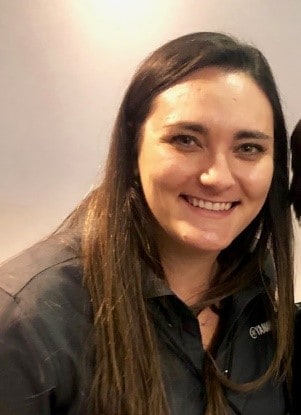There are an estimated 7.3 million people in the United States with an intellectual or developmental disability (I/DD). As we look toward the future of taking care of this large population, states will have to transition from purely Medicaid Managed Care (MMC) to value based care options. Currently states are moving at a slow pace adopting the value-based options for this population. Actually in 2016, “only 7% of LTSS for people with I/DD was expended through managed care” while 24% represented of all Medicaid LTSS spending.
Over the next few blogs, we will dive into the relationship between I/DD and value-based care. Some states have adopted many options for this population, while some still have yet to offer any. We will discuss what options are currently in place and what we anticipate to be on the horizon.
Let’s start by looking at the current landscape for I/DD and why there may be a slow adoption of VBP options among states. Largely, this population is the last to be enrolled in managed care in any Medicaid-funded healthcare, and any long-term services and supports (LTSS) for people with I/DD are frequently last to be incorporated in these contracts. The states that have had success seem to be dependent on what the goals are for their integrated care.
There are some staggeringly low numbers when it comes to managed care health plans in the US. Currently there are only eleven states that fully include people with I/DD in mandatory state plan/medical care enrollment. Twenty more have voluntary or varied enrollment and eight states exclude people with I/DD from managed care. Michigan, North Caroline, New York, Pennsylvania, Wisconsin, Tennessee, and Texas all have different levels of enrollment options. To date, only Kansas and Iowa have contracted with national commercial managed care plans with mandatory enrollment statewide for nearly all beneficiaries with I/DD for all services.
Why is the growth and acceptance so slow? On a high level, MLTSS for I/DD is uncharted waters for most states and they frankly don’t know if it will be worth it. Here is the breakdown according to the
Why is the growth and acceptance so slow? On a high level, MLTSS for I/DD is uncharted waters for most states and they frankly don’t know if it will be worth it. Here is the breakdown according to the 2018 ANCOR study:
- Experience – People: most states have limited experience serving the I/DD population. Commercial health plans are used to serving other Medicaid populations but I/DD requires a different level of attention, thoughtfulness, and unique services. This lack of knowledge can make it difficult to develop comprehensive programs from both the MCO’s and the support side of the tables.
- Experience – Rates: Similar to the reasoning above, states have not engaged in figuring out and stabilizing rates so there is diversity in how these rates are set. Since typically states have not collected data to create an informed decision on these rates, it makes it even more difficult to work with MCO’s and build a foundation for managed care.
- Experience – I/DD providers: Unlike other LTSS providers, there is no payer mix. Most providers are small community-based organizations that rely on Medicaid. These providers will need robust networks to file MCO claims such as billing, data collection, quality oversight, etc. Additionally, these I/DD providers are not financially set up for the reimbursement models that VBP likely will use.
- Quality Measures: Value Based Care relies highly on standards being set and creating accurate quality measures that are universally accepted. Currently, it is the wild west in I/DD standards. Creating evidence-based output measures will be difficult without a rigorous overhaul of how information is recorded.
- Lack of Savings: Medicaid has covered a vast majority of I/DD services since the 1970’s and with many I/DD providers being non-profit organizations they have relied on fundraising for financial support. “Nationally, 75% of Medicaid LTSS spending for people with I/DD is in community-based settings, and in states that have already largely or fully transitions their system from institutional to community-based services, there may be little or no cost savings to be realized.”
All of these potential hurdles can be overcome by stabilizing how data is collected and analyzed now. Current I/DD providers can help themselves by developing a clear strategy for their future and embracing new technologies that can ease the transition. Providers should also be up to date on current payment models, medical incentives, and predictive analysis to keep themselves ahead the curve.
The current landscape of MLTSS and I/DD in Value Based Care is a work in progress. There is a plethora of unclear data that needs to be cleaned out , or it will make it difficult for states to make a smooth transition to value based care. With that considered, I/DD could largely benefit from being under a VBP model since right now the consumers are getting the short end of the stick. The 7.3 million consumers and their caregivers are handcuffed to the current structure and could all benefit from having stronger data driven decisions.
Advocate’s Perspective: We are a long way from a clear path connecting I/DD and Value Based Payments. The fact that the option is being laid out is a huge step as consumers have often come last in managed care approaches and opportunities. As states make progress, consumers should stay in the know and do their research to learn about new opportunities as they present themselves. Proceed with caution though, many of these organizations have only worked with limited I/DD populations.
In the next blog, we will break down different state models that are currently in place and look at how setting goals can set the tone for the success of any project.
Onward!
Fady Sahhar & Mandy Sahhar

About the Author
Fady Sahhar brings over 30 years of senior management experience working with major multinational companies including Sara Lee, Mobil Oil, Tenneco Packaging, Pactiv, Progressive Insurance, Transitions Optical, PPG Industries and Essilor (France).
His corporate responsibilities included new product development, strategic planning, marketing management, and global sales. He has developed a number of global communications networks, launched products in over 45 countries, and managed a number of branded patented products.

About the Co-Author
Mandy Sahhar provides experience in digital marketing, event management, and business development. Her background has allowed her to get in on the ground floor of marketing efforts including website design, content marketing, and trade show planning. Through her modern approach, she focuses on bringing businesses into the new digital age of marketing through unique approaches and focused content creation. With a passion for communications, she can bring a fresh perspective to an ever-changing industry. Mandy has an MBA with a marketing concentration from Canisius College.
